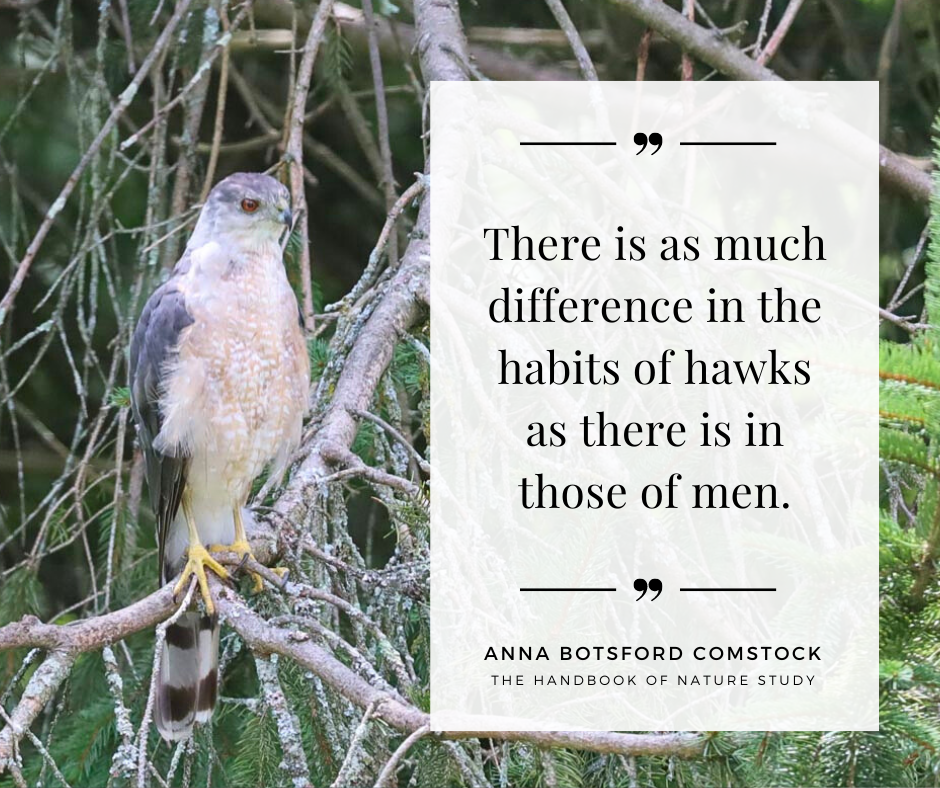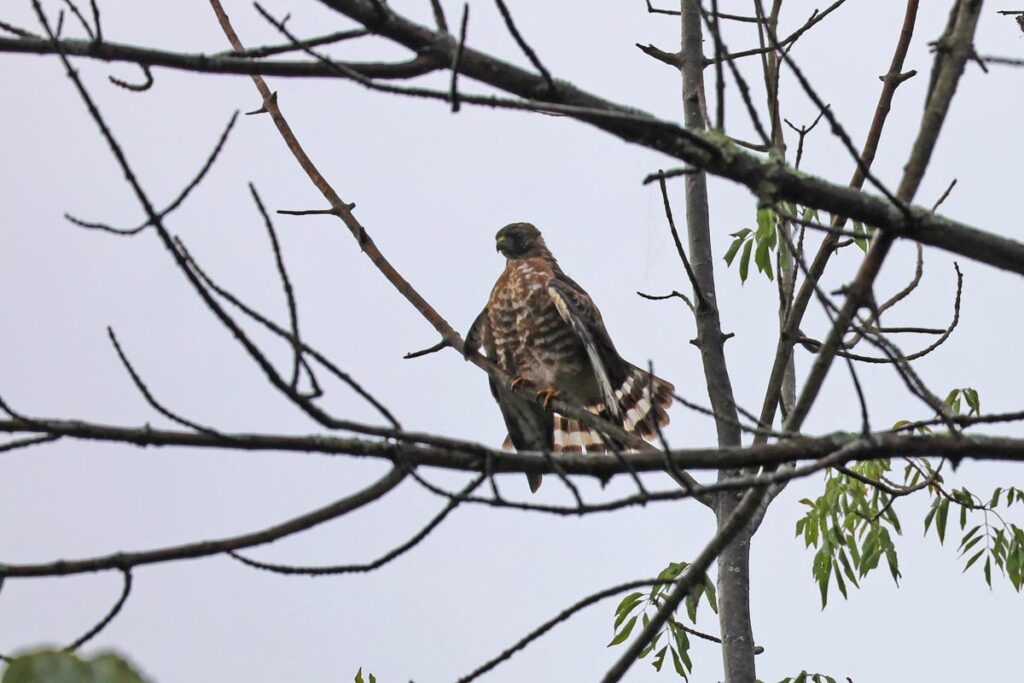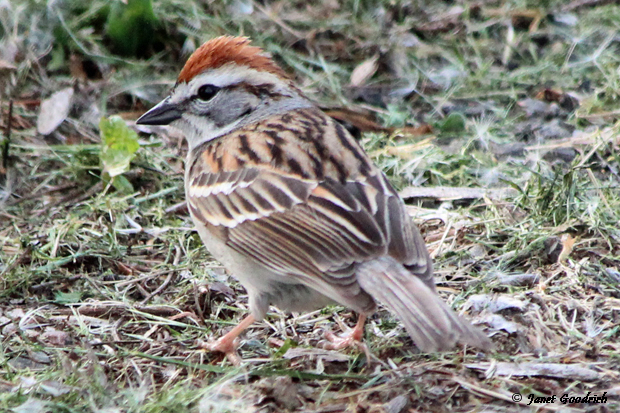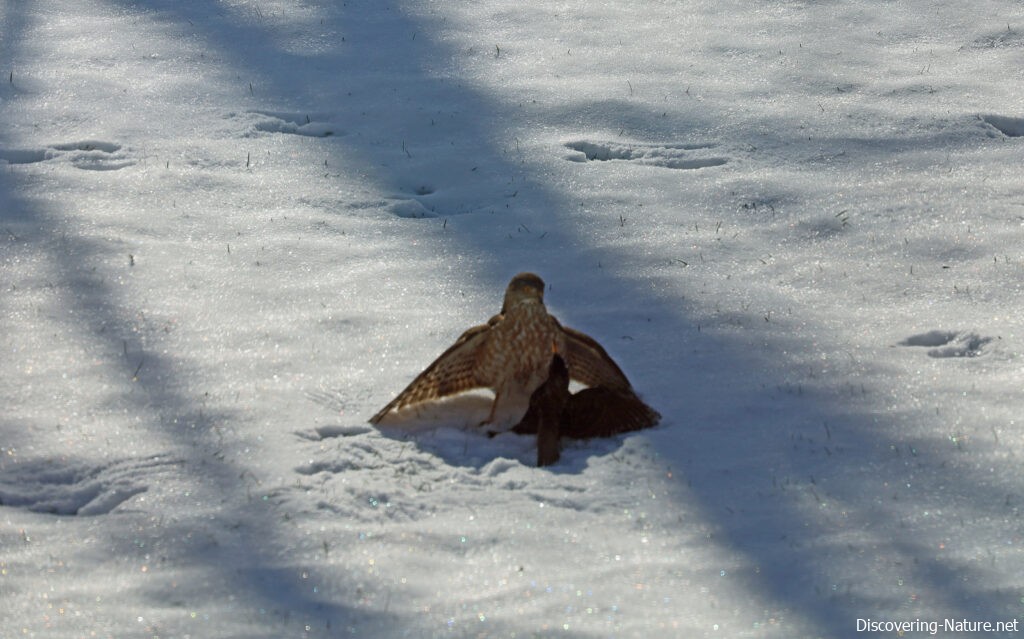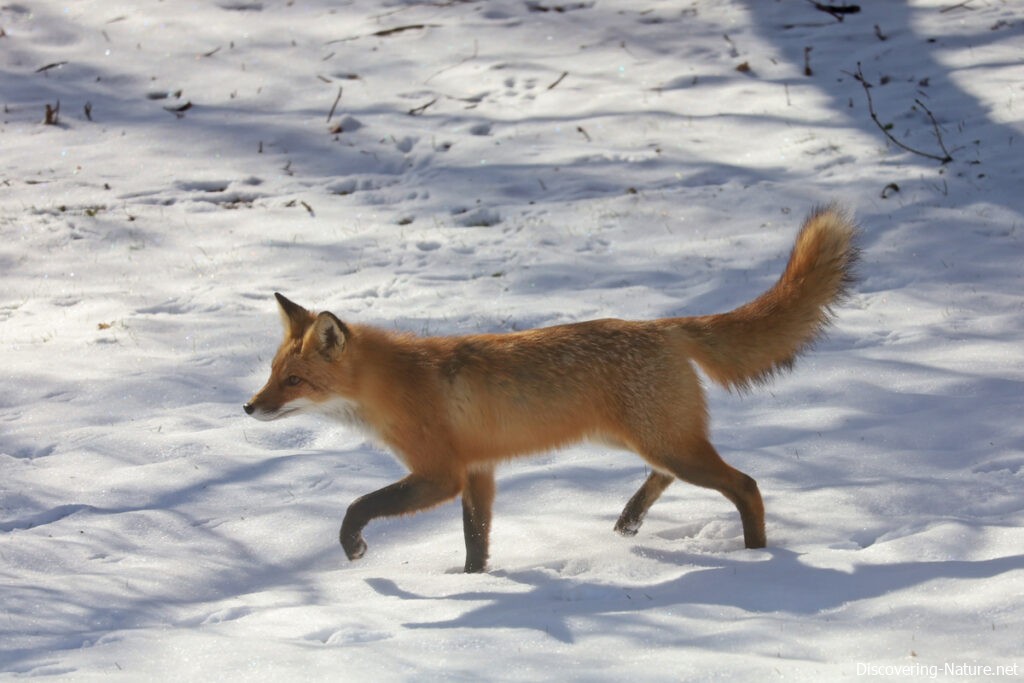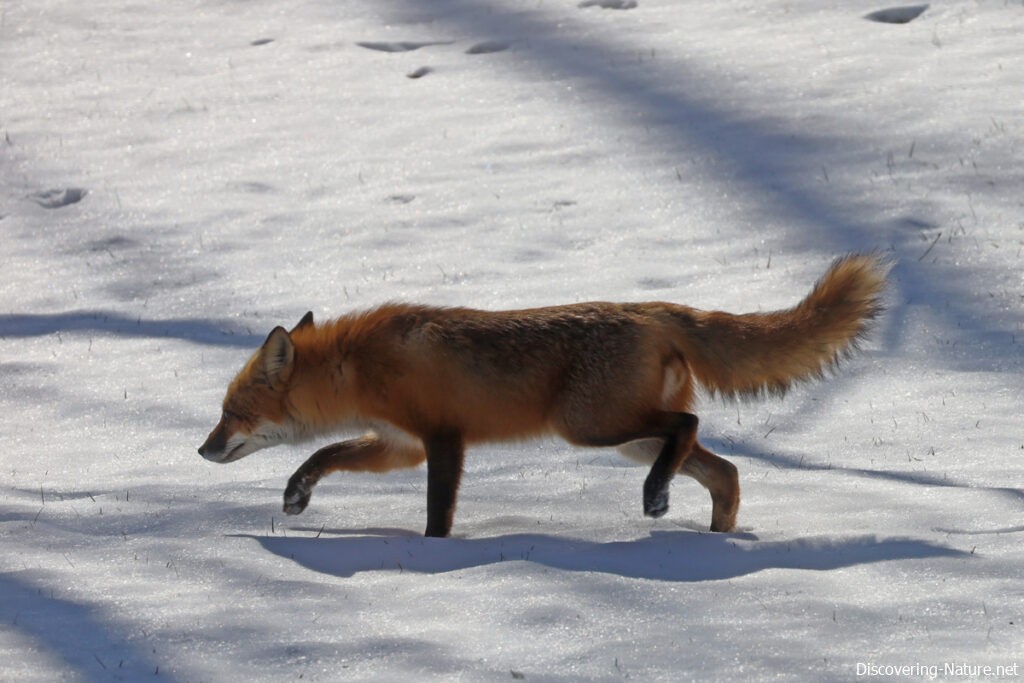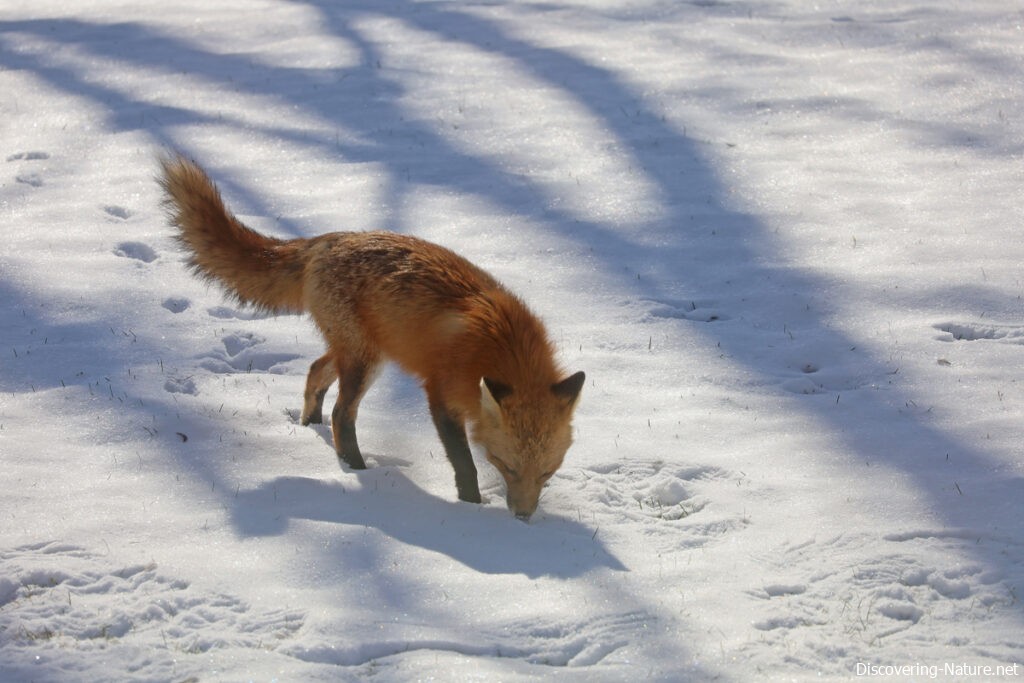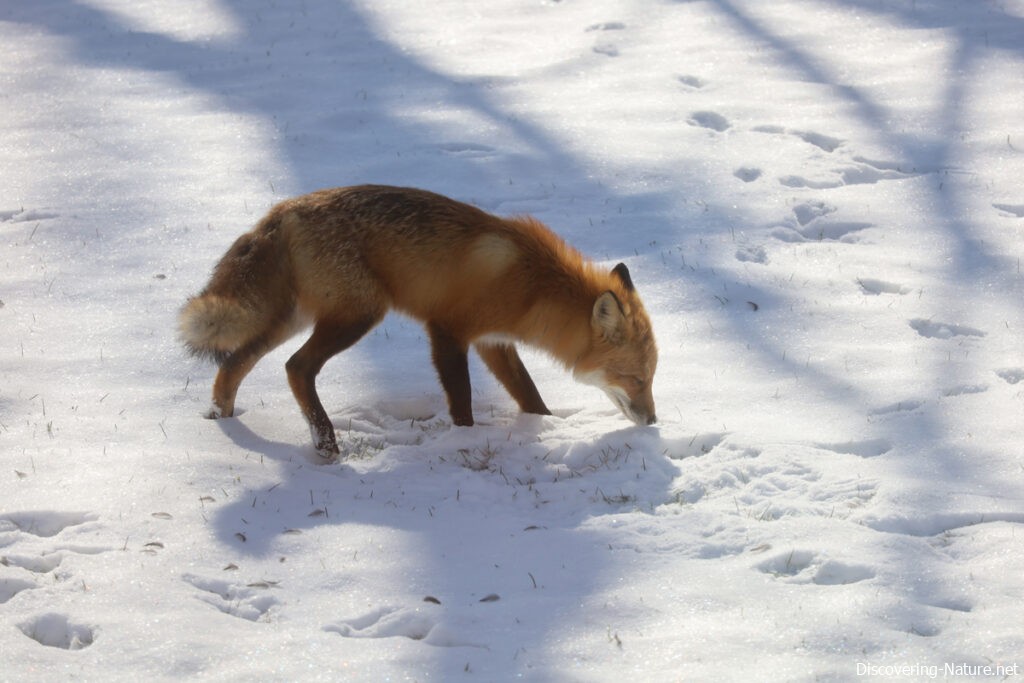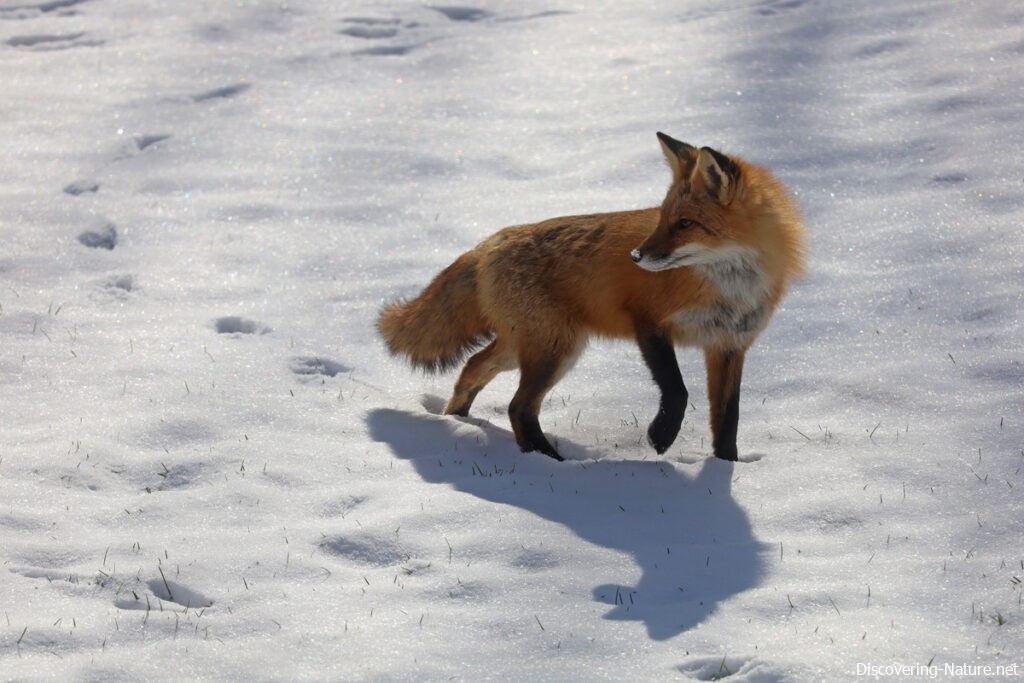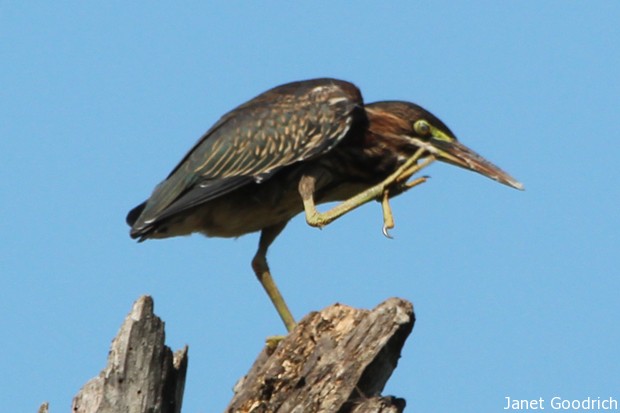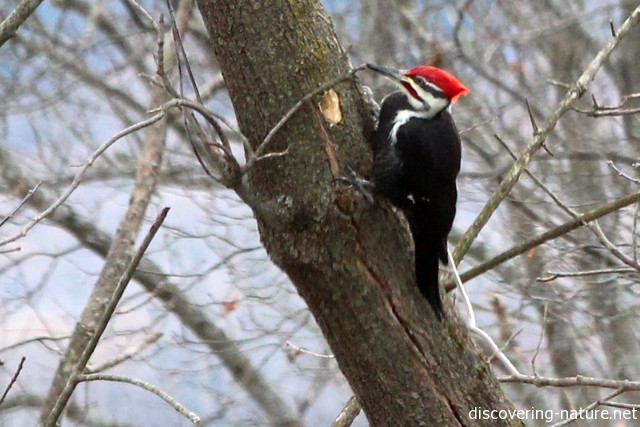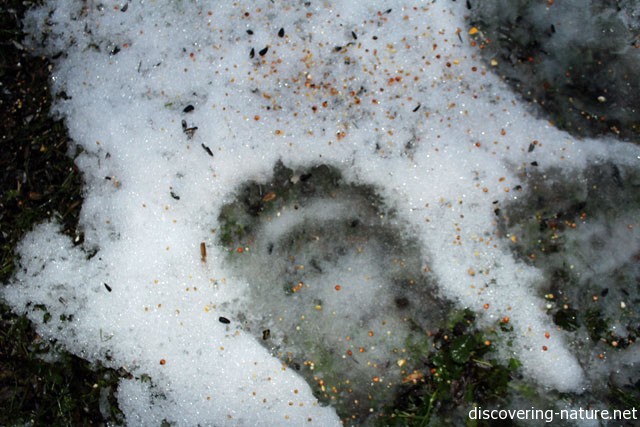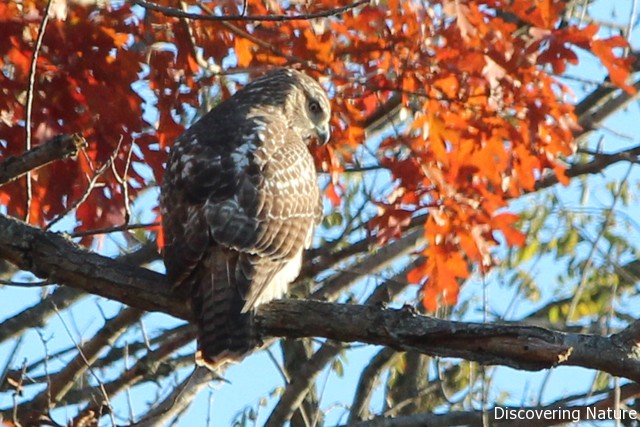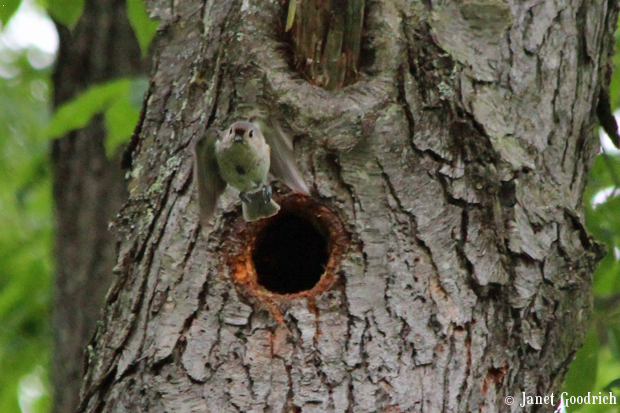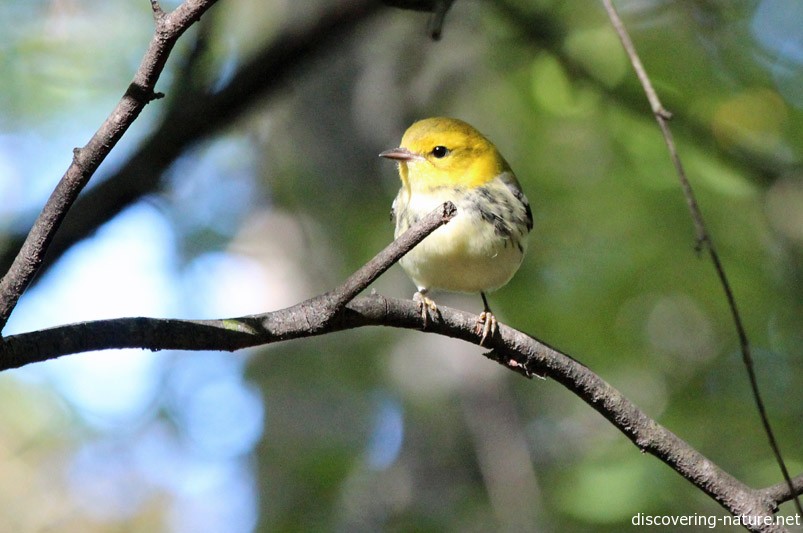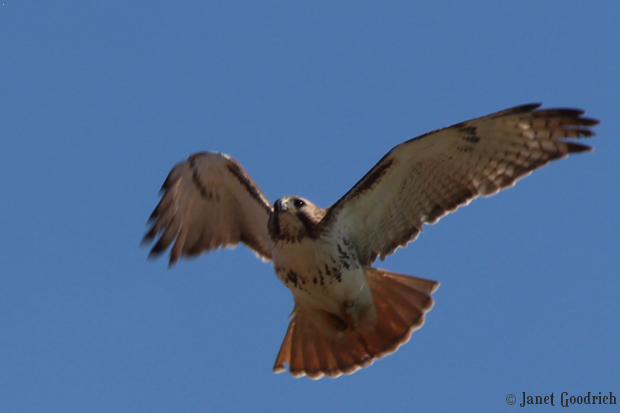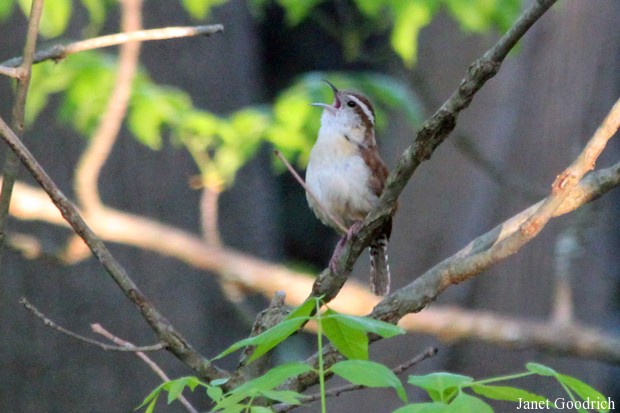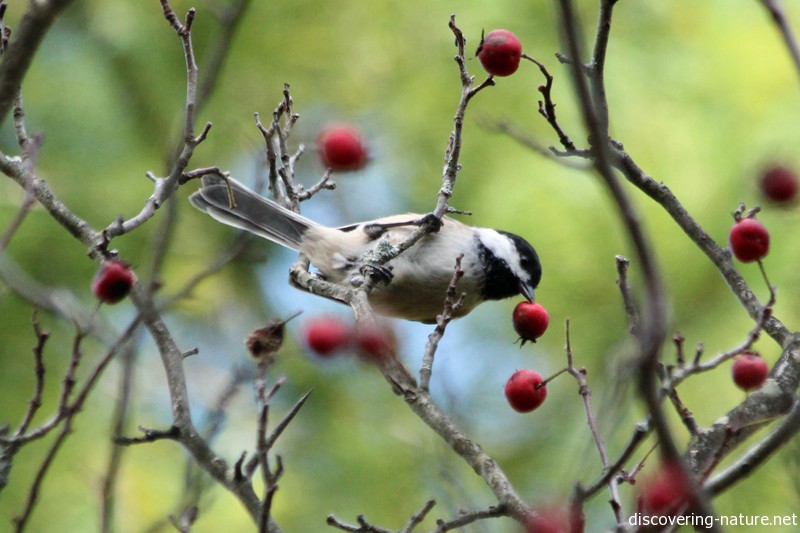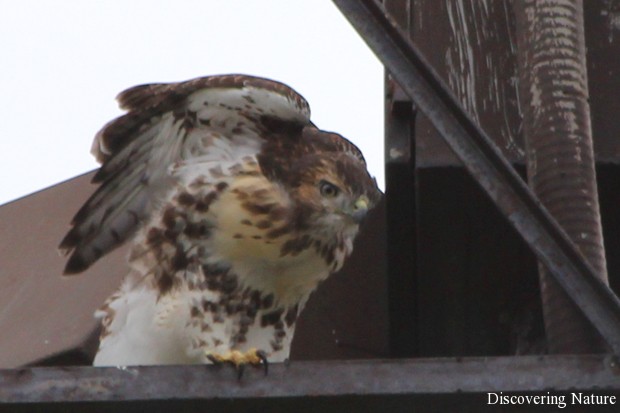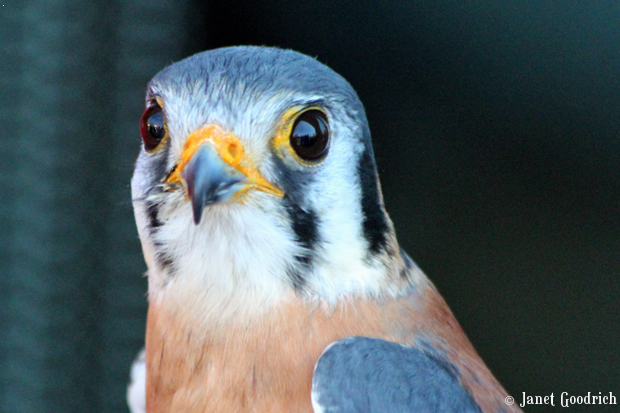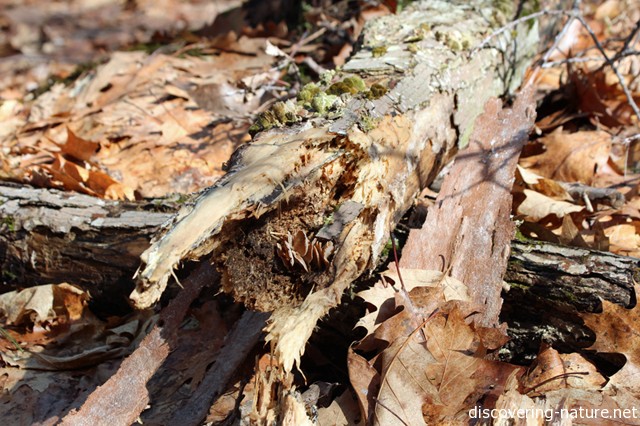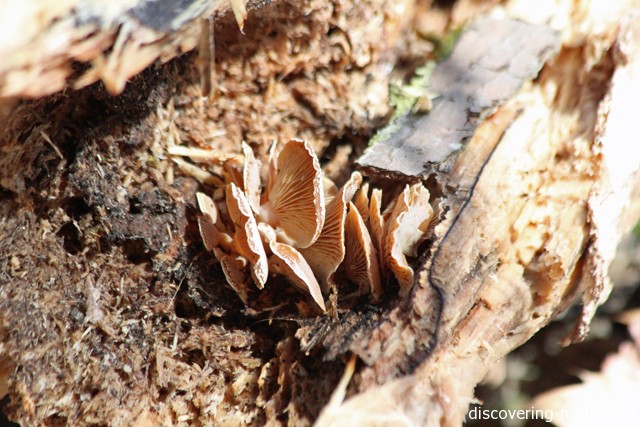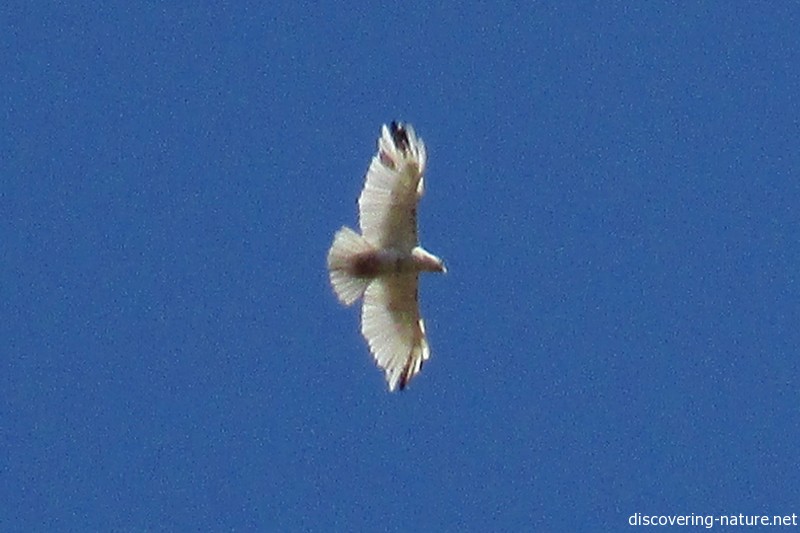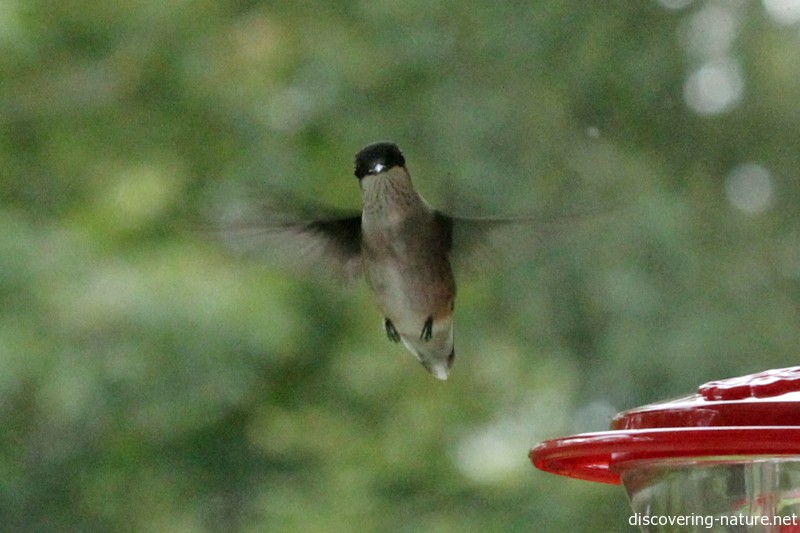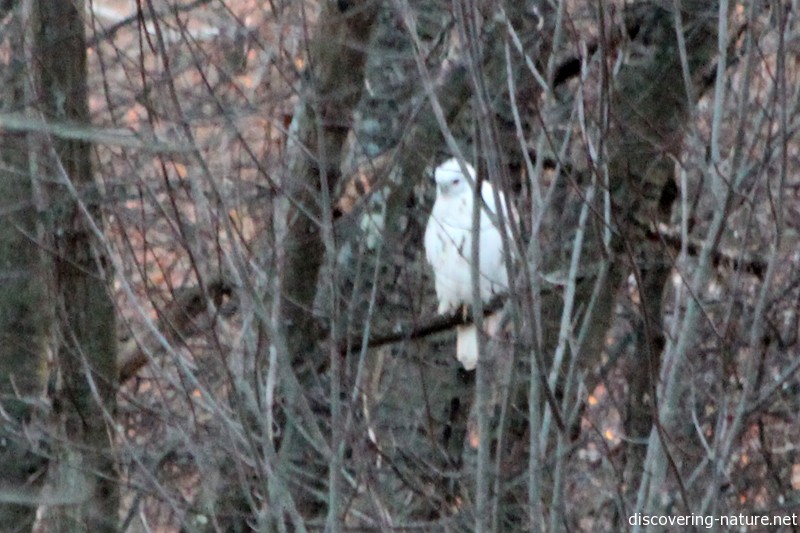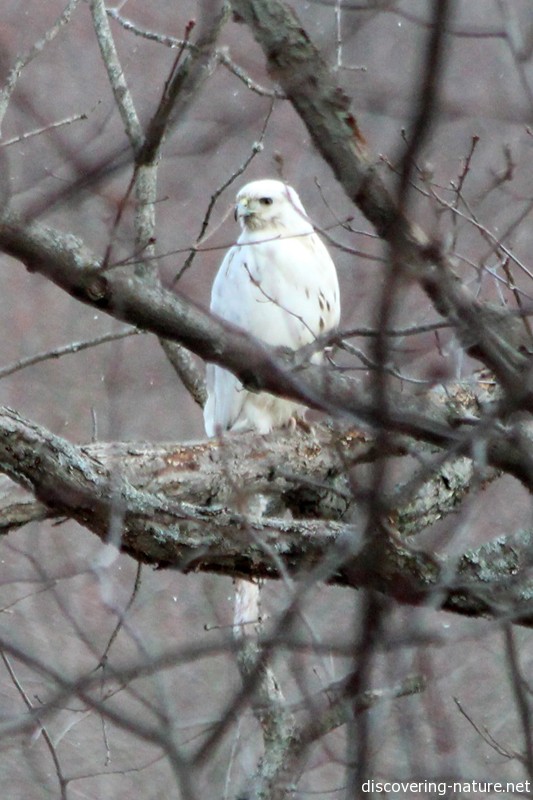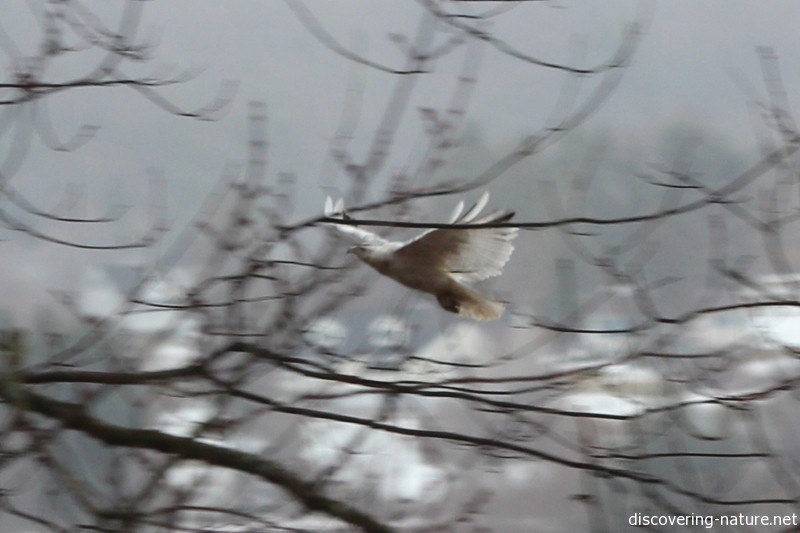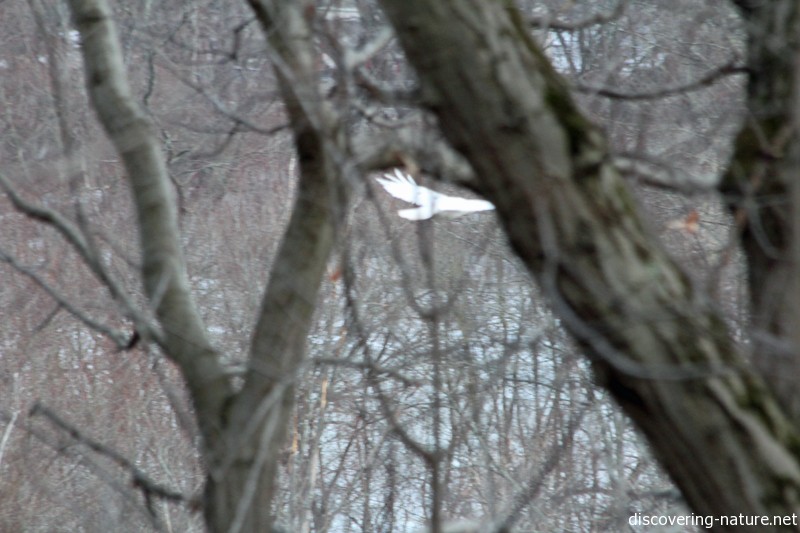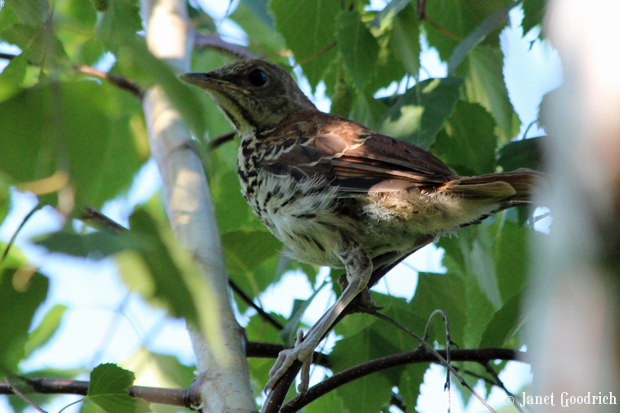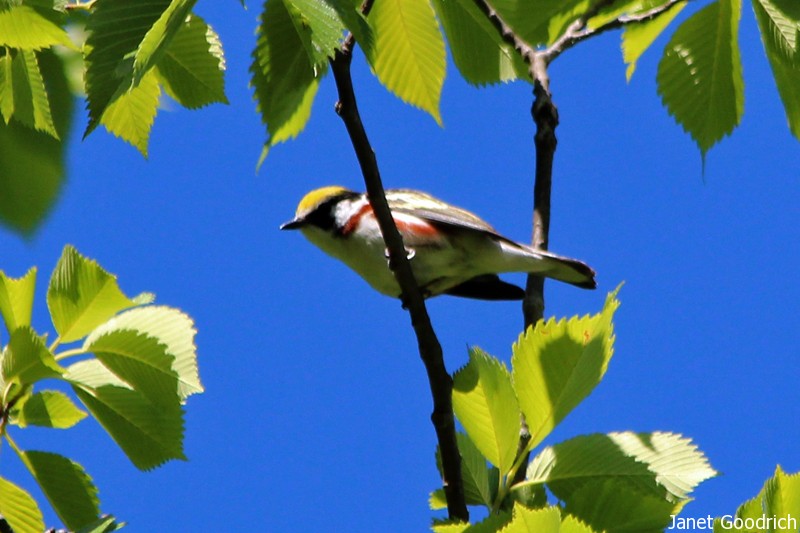-
Field Notes: Cooper’s Hawk
According to Anna Botsford Comstock, “It is the teacher’s duty and privilege to try to revolutionize some popular misconceptions about. . . hawks.” They are, she argues, “most unjustly treated, largely because most farmers consider that a ‘hawk is a hawk,’ and should always be shot to save the poultry, although there is as much difference in the habits of hawks as there is in those of men” (104).
She’s writing in defense of the Red-tailed and Red-shouldered hawks. Unfortunately for the Cooper’s hawk, she considers it “to be feared” because it is “very destructive to poultry.”
Admittedly this hawk is intimidating to look at. Its red eyes, lowered brow and habit of hunting other birds athletically through even dense foliage make it a cause for dread among songbird lovers. Mature hawks have blue-gray backs and long, striped tails. From our dining room window, we’ve seen a few birds expertly snatched in the Cooper’s hawk’s strong talons. Its habit is to squeeze its prey to death before consuming it, often mantling over it on the ground or in a tree to fend off other distressed birds. This post from a few years ago shows a Cooper’s hawk mantling — till another predator scares it away.
I don’t keep poultry, so I’ve never seen a Cooper attack a chicken. But I love the songbirds and hate to see it take one.
Comstock points out the distinctive flight of these hawks, noting that they “flap their wings for a time and then glide a distance. They do not soar on motionless outspread pinions by the hour” (105). All About Birds adds some fascinating facts, including the discovery that almost a quarter of the Cooper’s hawk skeletons in one study showed healed-over chest fractures. When we see the speed and agility of their flight, it’s not hard to understand how a collision with a tree might happen.
If a Cooper’s hawk targets birds at your feeders, you can take them down for a few days and it will move on. However, if you have a pair that have long regarded your neighborhood as their territory for nesting and hunting, that solution doesn’t work too well. You can remove the feeder permanently if you don’t want to aid and abet the Cooper. But if this predator is only an occasional visitor, you can consider whether it does more good to the birds to leave the feeder up or take it down.
What have you been seeing in your yard or nature walks this week?
-
Backyard Drama
What a story I witnessed this week as I rose from working at the kitchen table and glanced out the window.
A Cooper’s hawk was wrestling a starling to the death. By the time I looked out, the starling was motionless as the hawk pressed down with its talons, patiently squeezing out its life. Eventually it started plucking out beaksfull of feathers in preparation for its meal.
But as I turned away, I heard the starling start screeching. Looking out, I was astonished to see it fighting back against the startled hawk. This is an unfocused picture, but it gives the general sense of it:
Even more shockingly, after a few moments, the Cooper actually gave up and flew into a tree. The starling flew into a different tree. Then out of the corner of my eye, I saw a mound of reddish fur in the back corner of the yard: a fox, watching curiously. It came out across the lawn and investigated the scene of struggle.
It probably saved the starling’s life, attracted by the uproar and appearing at just that moment. I’m not sure whether the bird will survive whatever wounds it sustained, but the sight of such a remarkable string of events was an amazing gift.
-
Marley
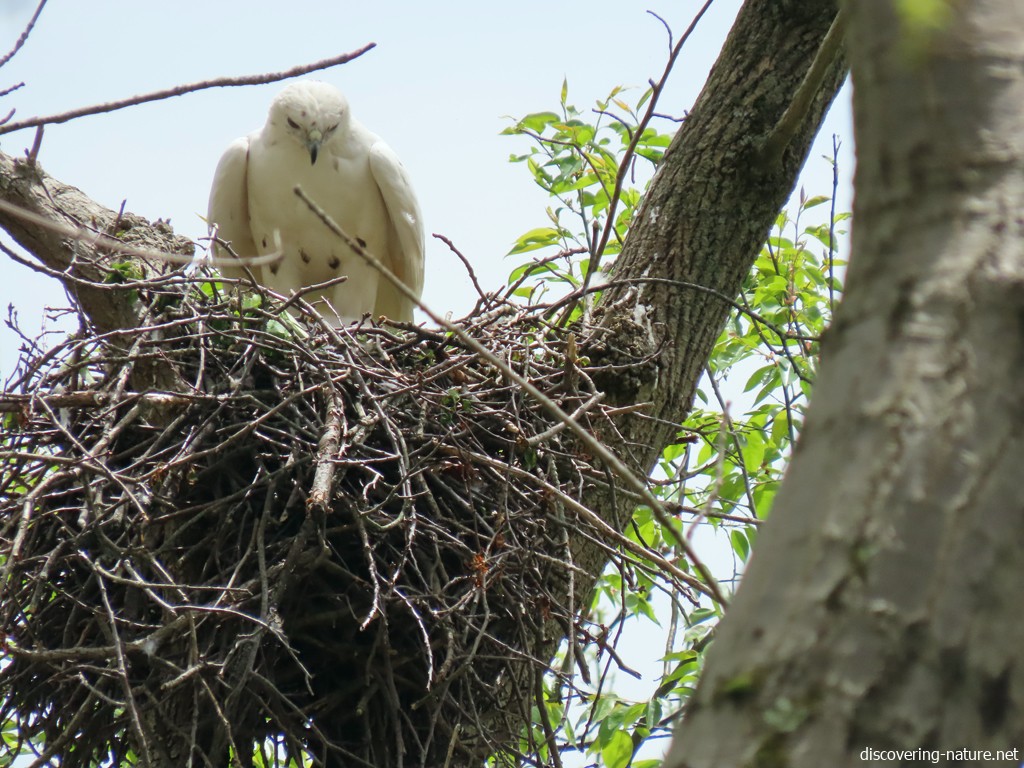
My daughter took these pictures of the leucistic hawk nesting nearby. A few years ago, we named her Marley, after the ghost in A Christmas Carol. She’s a magnificent, powerful hawk.
One day last summer as I stood at the kitchen window, she swooped into view and landed at the base of the bird feeder, then took off and disappeared into the woods. It all happened in about 3 seconds; I didn’t see what she got, but I’m guessing a chipmunk. She left a gray squirrel mid-munch on the ground a few feet away, looking as dazed and disbelieving as I felt. If I hadn’t been standing there at that moment, eyes trained on that spot, I’d have missed it.
My daughter’s taking some great pictures. She’s inspiring me to learn more about how to use all the features on my Panasonic Lumix DMC FZ-300. Her camera is a Canon SX70 hs.
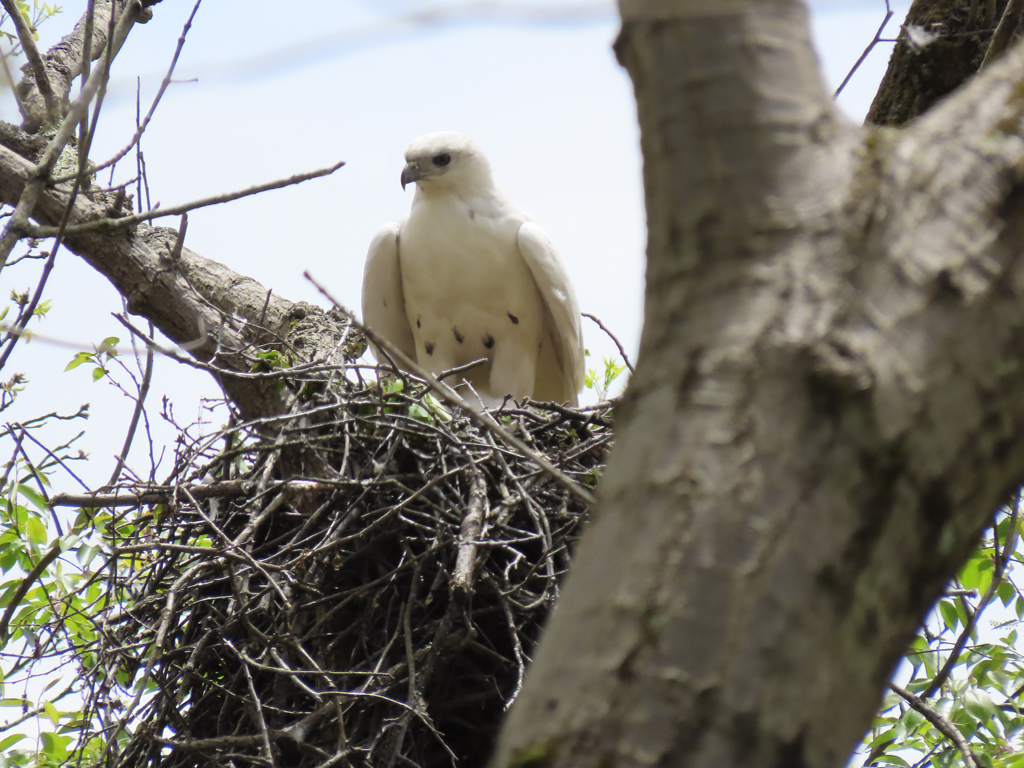
So far we’ve seen just one chick. In this picture, just a bit of its fluff shows at Marley’s feet.
-
Cooper the Stalker
The Cooper’s hawk is not my favorite — especially when he shows up, as he periodically does, at our bird feeder. Though usually he’s unsuccessful, it seems exceptionally uncivil to turn our efforts to help his fellow birds maintain a food supply in winter into an opportunity to kill and eat them. Nevertheless, I have to admire his handsomeness and athleticism. This series captures one of his visits, when he landed on the feeder and then noticed what must’ve been a mouse on the ground near the woodpile. He left empty-taloned, but his thought processes were easy to read.

This is where the appetizers usually get delivered, right? 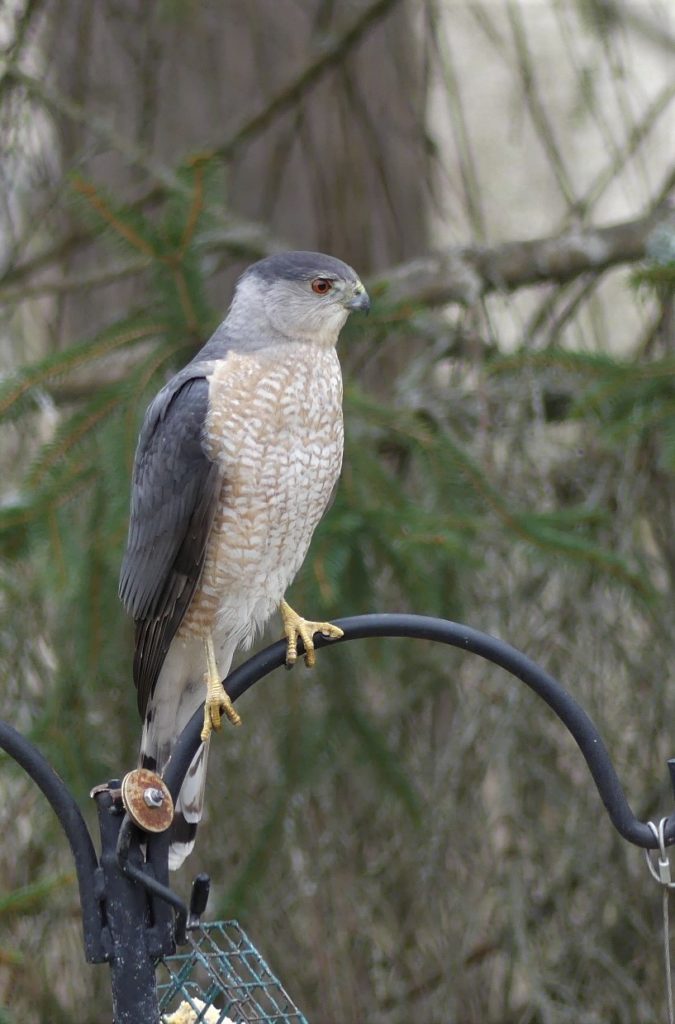
Waiting, waiting… Hey, what’s that on the ground near the woodpile? 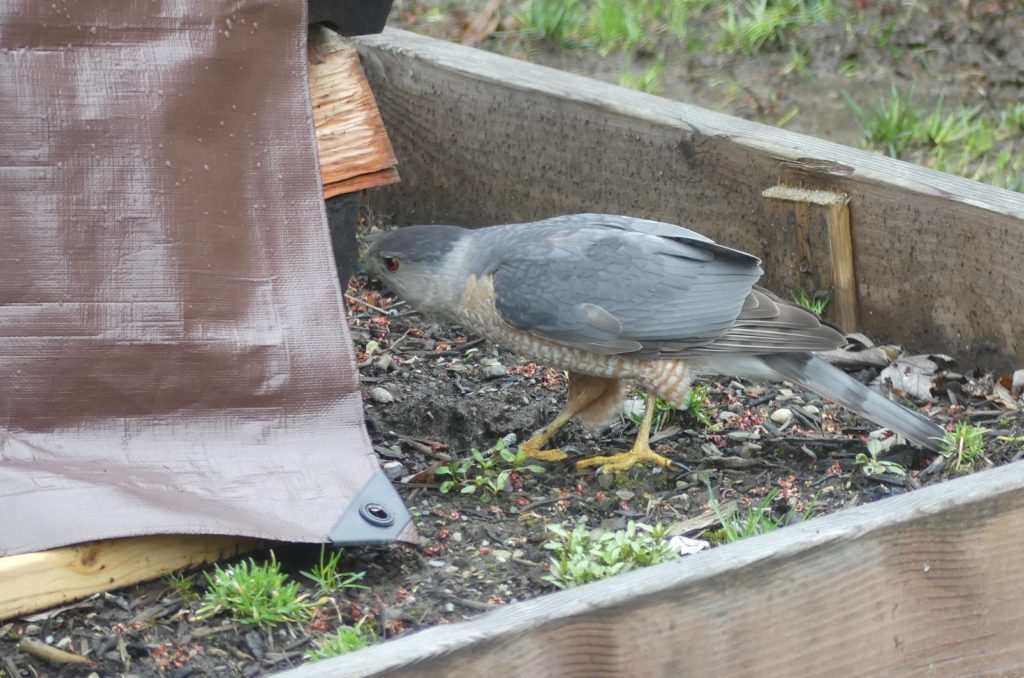
Here, mousy mousy! 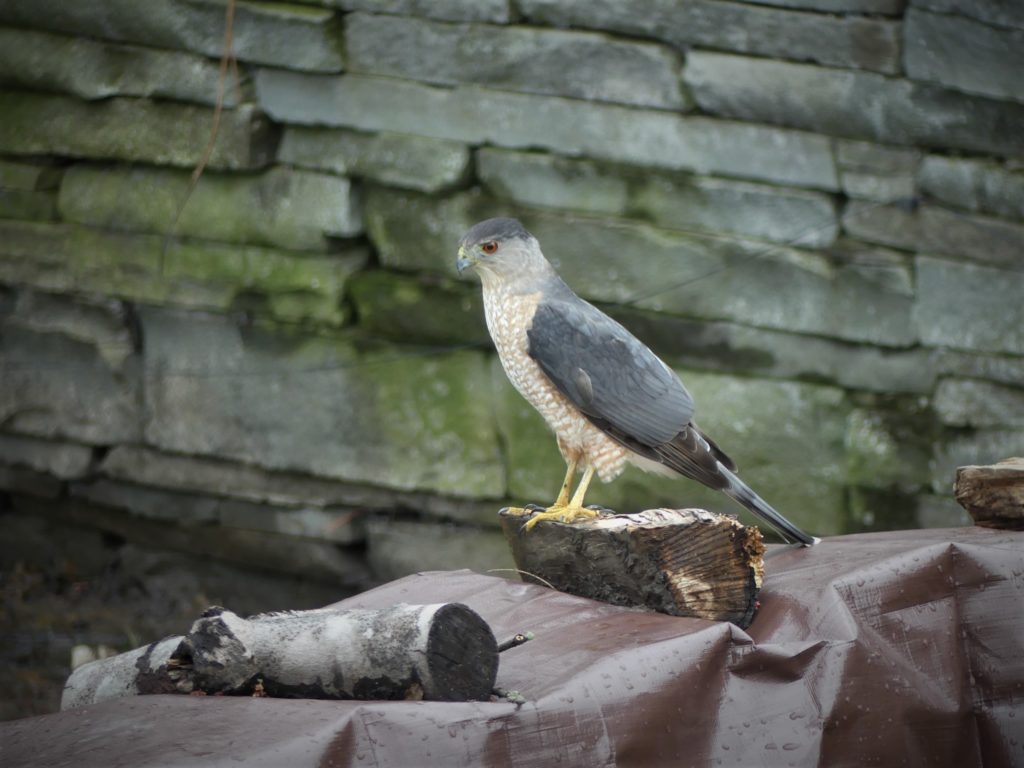
-
Interior decoration
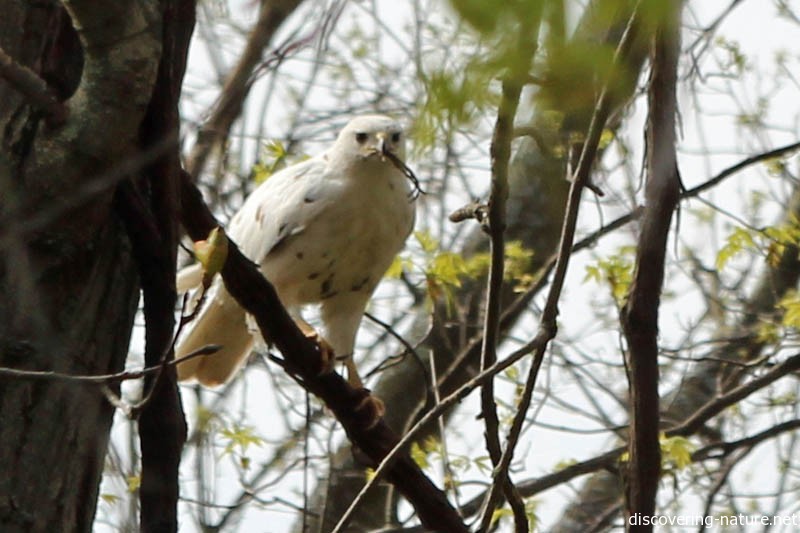
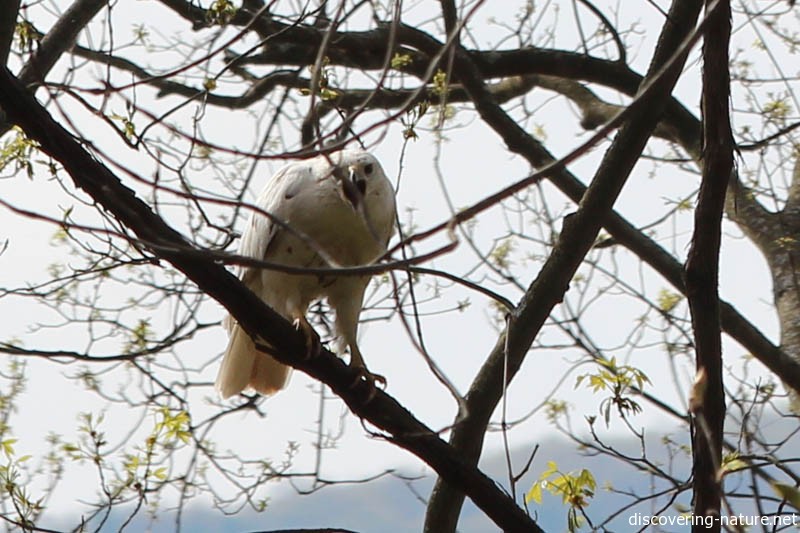
She was gathering bark for the nest but dropped it to scream. Yes, I felt badly… even though we were actually passing by at a good clip and did not stop to stare or harrass her.
-
Protective mother
This leucistic redtail has been sitting on her nest for some weeks, and now she appears to be feeding young.
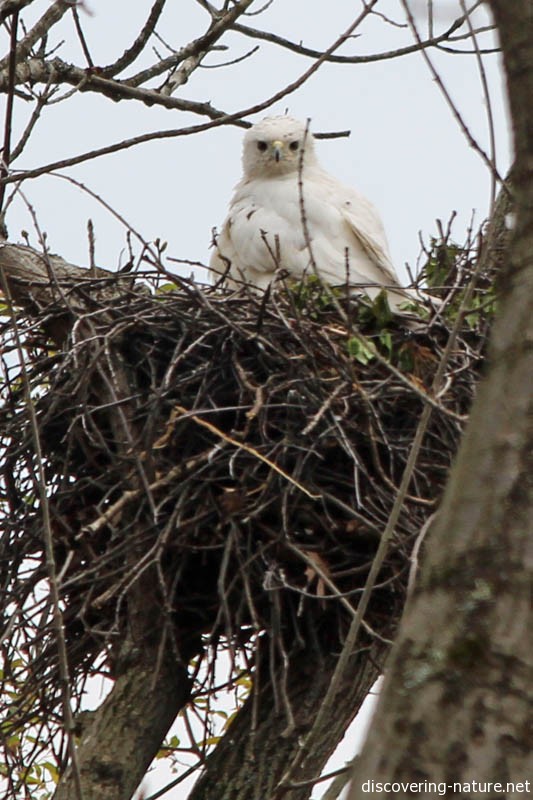
Instead of being nestled down into the nest, we see her sitting more erect, as she is in this picture. Often she’s on the edge of the nest, peering down, probably giving tiny bites to tiny beaks.
It’s interesting to see the fresh greens she has apparently added to the nest. I know Big Red did the same thing in the Cornell hawk nest we observed a few years ago too, though I’m not sure what the purpose is.
It’s been awhile since I’ve seen the male, so I hope he’s all right. At this stage, there’s plenty for both parents to do.
-
White hawk nesting
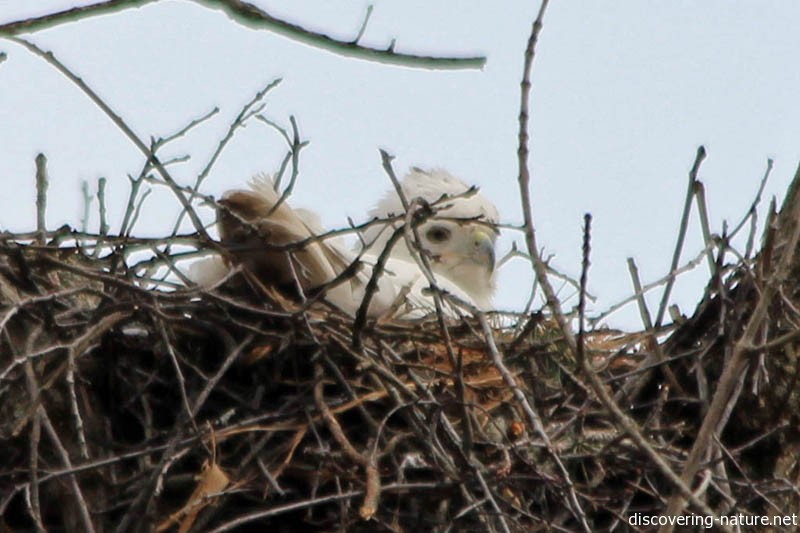
-
Ghost Story
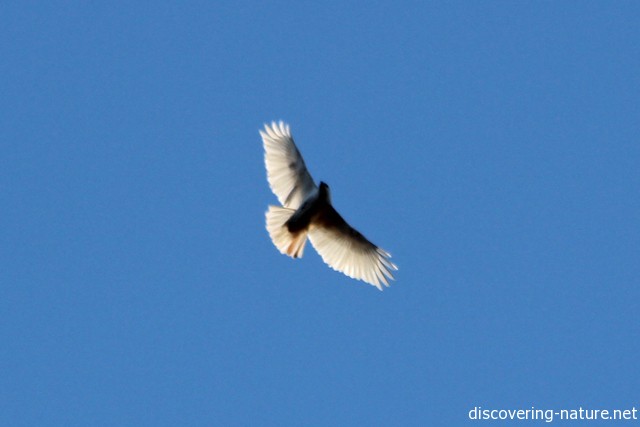
We’ve been keeping an eye out for the leucistic redtail in our neck of the woods. Our sightings are fleeting, but we’ve accumulated enough of them to construct a narrative at this point.
Usually the hawk is far away, and she has a knack for choosing unphotographable areas. We call her Marley, after the ghost in A Christmas Carol, because of her whiteness. We think of her as female because she is larger than the more typically colored redtail we see her with.
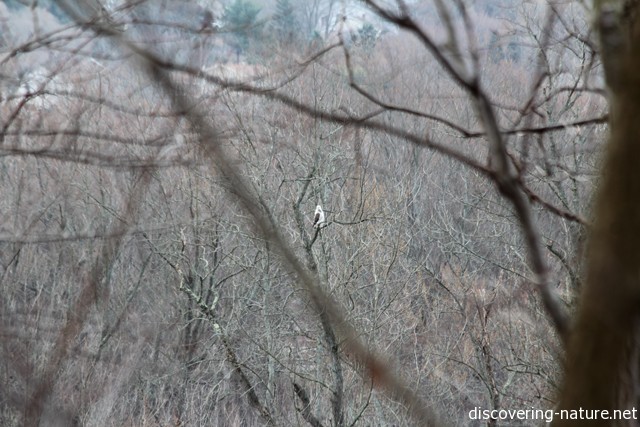
See what I mean about unphotographable areas? Cropped in, though, you can see that this is a pair of hawks.
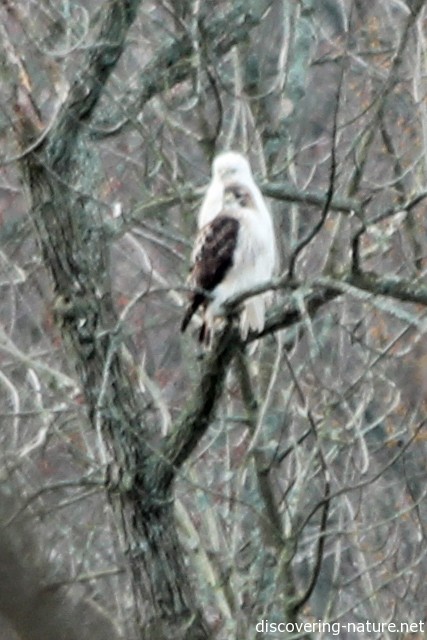
Lately, we’ve been seeing Marley near, and sometimes perched on, a nest.
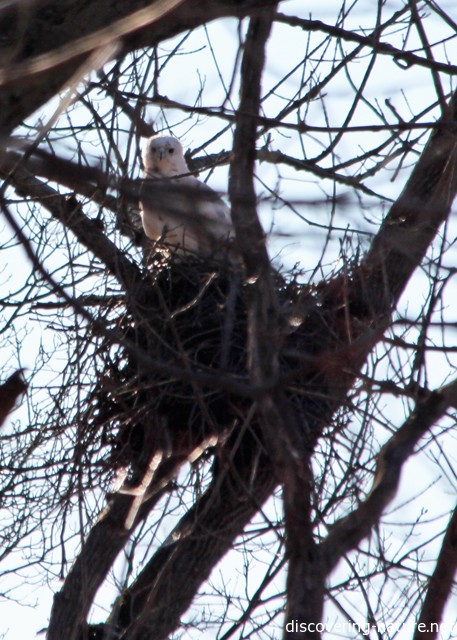
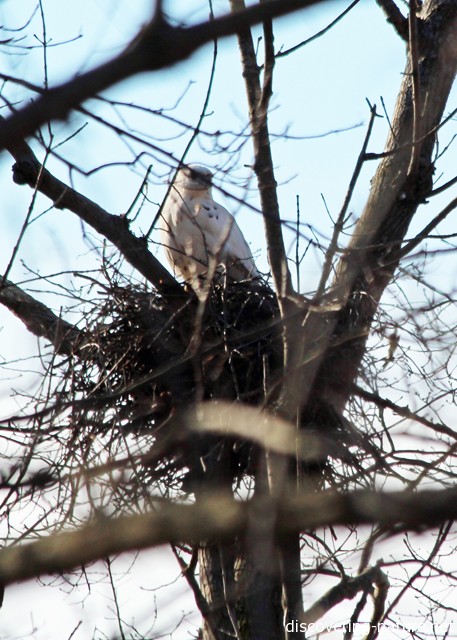
So it looks like her story goes something like this so far: Marley has paired up with a male, and she is getting ready for nesting season. We’re not positive yet that she’s actively using it, but if so this is by far the most unusual nest we know of. We look forward to observing whatever we’re able to see over the next few months without scaring her away from her maternal duties.
-
Sights and sounds of spring
It was 27 degrees when we got up this morning, but the sky was blue and it was destined to warm up into the seventies. Who wouldn’t take a walk?
Today it was more about sounds than sights: tiny rustlings that turned out to be kinglets, squirrels, cardinals or chipmunks. A distant woodpecker. A faraway wood thrush. The vigorous sound of running water in the thawed creek. I did see some deer, but only for a split second before they fled.
Then I saw a pair of quiet, elusive birds. I wanted to sit still and see if they’d come closer, and behold, there was an inviting bench just to the side of the trail.
It just happened to be near the tree where I got to watch some nesting chickadees a couple of years ago…
It won’t happen again — not in that tree. It was lying beside the trail, fallen over the winter.
But it was neat to get to see the inside of their home. The top of the tree had broken off so the soft nest cavity was visible. I also admired their wall decor.
Finally the other birds came close enough to see. There’s a chance they were oven birds, but I’m pretty sure they were veery. They made no sound so I couldn’t confirm by their voices. But I enjoyed the way they accepted my being there as they hopped around flipping over leaves and looking for breakfast. They’re birds more often heard than seen, so it was a treat.
When I got home we had more excitement: a redtail rose out of the brush beyond our house. A moment later, the leucistic redtail rose up too, and we saw its blazing whiteness as it circled high into the air. We ran outside in our socks to watch, and discovered there was a third redtail — which the white one chased, screaming and seeming to collide with it. It chased it three or four miles away and then turned, tucked its wings, and sped back at incredible speed. What would have been a ten minute drive took about 15 seconds. I guessed it was a male, defending its nesting territory and and its mate.
I got some awesome pictures, but you’ll have to take my word for it, because after I had excitedly snapped them I got inside and my camera informed me there was no card inserted. I had taken it out to download the pics from my walk! None of my pictures were saved.
Fortunately my daughter got a few pics with her point and shoot, and she says it’s okay if I share them.
It was an amazing sight! I’m hoping for another chance — but meantime, it’s thrilling to have the memory.
-
Leucistic Red-tail
We’ve seen this large, snowy white raptor several times nearby since around November.
Naturally, I’ve thought it was a snowy owl. Last year snowies were on everyone’s radar because it was an irruption year, and I figured this might be one of the surplus young who were born in the year of plentiful lemmings.
We saw it about a week ago being mobbed by crows, and it was so large, and so white, I thought again: snowy owl! But…
Yesterday it was sitting in and near an old red-tailed hawk’s nest, vocalizing like crazy, and I got a couple of better (or at least, closer!) pictures.
Clearly not a snowy owl!
I noticed several things. It was not an owl call; it was the classic red-tail’s scream. (Another hawk answered from farther away!) It didn’t have yellow eyes. It didn’t have feathered feet. And it just didn’t have the blunt owl body.
Could there be such a thing as an albino red-tail? Searching online, I discovered there could — though the word in this case is not albino, but leucistic — partially albino. The eyes, after all, are not red. And there are some dark accents in the feathers.
We were tickled to have a snowy owl, but we’re even more tickled to have a rare hawk. At first I was sad, thinking its chances of survival would be poor without the protective coloration. But it’s already survived the winter, so its survival skills are pretty good. There aren’t that many predators to worry about. And a dense leaf canopy would hide it well enough from prey below.
As for being chased by its own kind as an enemy, well — it surely did seem to be conversing with that second hawk, and perhaps readying the nest for breeding season. So we’ll see. There is at least this picture online of a leucistic red-tail on friendly terms with a more typical one, so I have hope.
My daughter named it Marley, after the ghost in A Christmas Carol.
